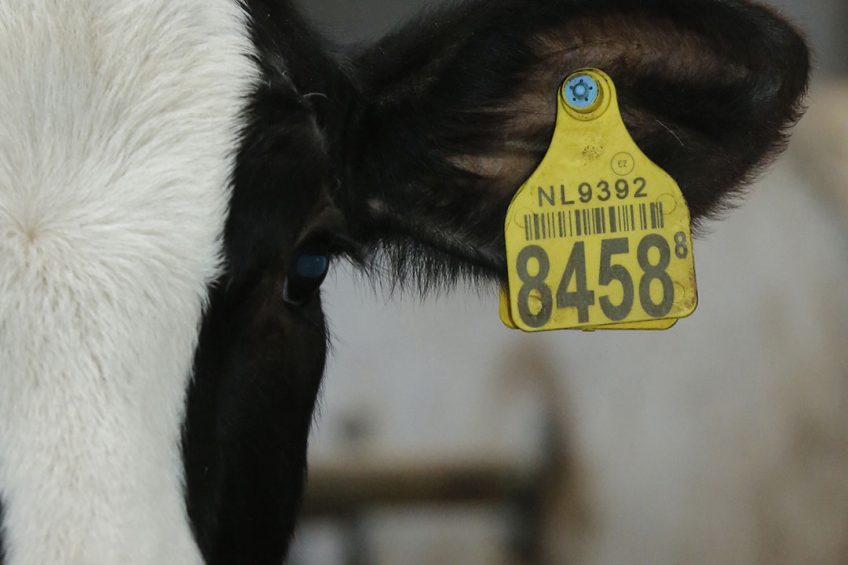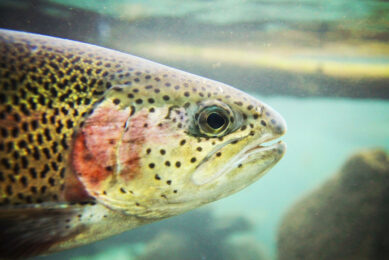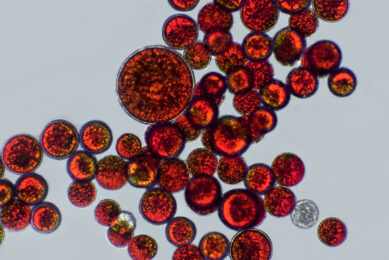Value of microalgae supplementation in dairy calves’ diets

Previous studies have mainly focused on the effects of algae supplementation on monogastrics, with little research in supplementation to improve the health of dairy calves. But now a study has been published which reviews the value of microalgae in calves.
High morbidity and mortality of dairy calves is a major challenge for most dairy farms. Neonatal diarrhoea is one of the major causes of financial loss on dairy farms. Strategies to improve the growth and health of calves in the pre-weaning phase could increase the future production potential of calves.
Algae is one of the common fatty acid resources (particularly n-3 PUFAs) for animals. The n-3 polyunsaturated fatty acids have many biological functions, including the regulation of immune function and improvement of the antioxidant capacity. Marine algae is a rich source of the omega-3 fatty acid DHA, and antioxidant compounds such as phenolics. Studies with other animal species suggest that n-3 PUFAs and phenolics in microalgae (Schizochytrium sp.) could improve health of animals by improving the antioxidant status function of animals. A recent study published in the Animal Feed Science and Technology (2021) journal reviews the value of microalgae (Schizochytrium sp.) in calves.
The study: Effects of microalgae on calves
A total of 50 newborn Holstein calves were used to investigate the effects of microalgae (Schizochytrium sp.) supplementation at 4 different addition levels (0, 5, 10, 20, and 40 g/d) on growth performance and antioxidant capacity of dairy calves. The 5 groups were fed whole milk from day 4 to day 22 and then milk replacer from day 23 to day 60.
Growth performance
The average daily gain during the study period increased with increasing inclusion level up to 20 g/d then decreased for 40 g/d (but was still higher than the control without the algae). Wither heights were also increased with the increase in inclusion levels. The 20 g/d had a 15% higher ADG compared to the control group. The increase in growth was attributed to the possible effect of DHA increasing the expression of muscle IGF-1 and activating insulin receptors to promote muscle protein synthesis. The feed conversion ratio followed the exact pattern observed with growth, with 20 g/d having the best value for FCR.
Health status improved
In this study, an improved antioxidant status indicated an improvement in the calves’ health. The inherent antioxidant defence system is composed of enzymes including glutathione peroxidase, catalase, and superoxide dismutase. Superoxide dismutase is the first enzyme involved in the conversion of oxygen radicals to hydrogen peroxides, while catalase is involved in the second step of removing H2O2 and converting them into O2.
The concentrations of catalase and glutathione peroxidase in serum were increased linearly with the increasing levels of the algae, which indicated improved antioxidant status, hence better health status of calves. The concentration of superoxide dismutase was highest at 20 g/d algae level, while for both glutathione peroxidase and catalase it was highest at 40 g/d.
On the other hand, contrary to expectations, malondialdehyde concentration was higher than the control at inclusion levels 20 g/d and 40 g/d. It was suggested that since malondialdehyde is a non-specific product of lipid peroxidation, this could indicate that high dose of n-3 PUFA may cause oxidative stress and lead to the occurrence of inflammatory response.
Microalgae benefits dairy calves before weaning
The researchers concluded that the 20 g/d microalgae is ideal for improving the growth performance and health status of dairy calves before weaning.
This article is based on the original article by A La Teng Zhu La, K. M . Pierce, et al. 2021. Supplementation with Schizochytrium sp. enhances growth performance and antioxidant capability of dairy calves before weaning. Animal Feed Science and Technology, Vol 271, 2021, 114779. 10.1016/j.anifeedsci.2020.114779.











